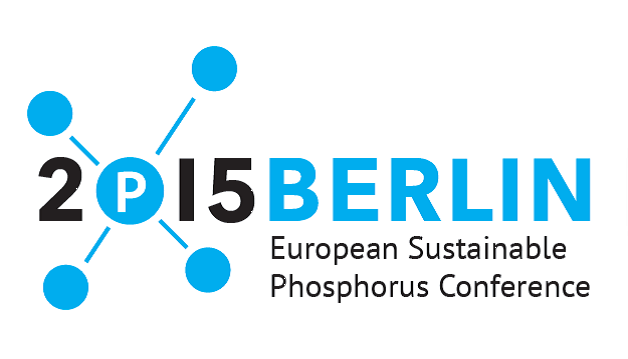PARALLEL SESSION
Skill development for closing the P cycle
Summary
SIDE EVENT
Circular Approaches to Phosphorus: from Research to deployment
Presentations and Conclusions
R&D Projects
Networks and Platforms |
|
Over two days, ESPC2 brought together 300 experts and decision makers in the field of phosphorus management. Companies and stakeholders presented success stories in phosphorus management and commitments were made to address barriers to phosphorus recycling.
Summarized by Arnoud Passenier,
ESPP President
As President of the European Sustainable Phosphorus Platform, I am proud to have been involved in the success of the Second European Sustainable Phosphorus Conference (ESPC2), Berlin, 5-6 March 2015.
Firstly, I wish to thank the Conference sponsors, the European Commission, the German Federal Government and the Netherlands Government who made it possible, and particularly the German Phosphorus Platform and Kompetenzzentrum Wasser Berlin for making it happen.
The Conference confirmed the growing awareness of phosphorus sustainability, since the first Conference (ESPC1, 2013) and the launch of the European Sustainable Phosphorus Platform (ESPP).
The scope of phosphorus stewardship engagement has widened, covering food security, agriculture, phosphorus efficiency – reuse – recycling, eutrophication rehabilitation, food - phosphorus footprint - diet, social aspects (e.g. skill training for circular economy jobs), innovation and new business opportunities …
The strong sense of shared commitment and engagement, at ESPC2, from hands-on business operators to policy makers, was highly positive and ambitious.
Concluding the Conference, I admitted a dream. Of a future where farmers’ productivity using just the right amount of phosphorus in fertilisers, produces food without degrading lakes, rivers or seas. Where diets with a low phosphorus footprint are optimal for health but equally for global food security. Where Europe has supply security for phosphorus both for farmers and for the chemical industry. Where phosphorus can be sustainably used for important society needs such as catalysts or sustainable fire safety. Where recycling and a circular nutrient economy create local jobs and added value.
ESPC2 Berlin has, I believe, brought this dream a little closer and I invite you to join us in the European Sustainable Phosphorus Platform to take further practical steps together.
Arnoud Passenier
ESPP President
Netherlands Ministry for Infrastructure and the Environment
Various parallel sessions and
events took place
- A workshop on innovation deployment, co-organised by the European Commission, P-REX and ESPP, brought together 28 projects on P-recovery
- An ESPP companies’ working group proposed EU criteria for recovered struvite as a fertiliser
- Stands presented solutions by Kubota, Hitachi, Outotec, Refertil, Rostock P Campus, Flanders and Netherlands Nutrient Platforms, NuReSys and BioRefine
- HVC, SNB and Ecophos announced a 60'000 tonnes/year P recycling contract
- The German Phosphorus Platform (DPP) elected a Board of industry, R&D and regulators
- The Everglades Foundation, Florida, presented a US$ 10 million prize for a cost effective P-removal and recovery innovative technology
- ARREAU progressed “best practice” case-studies for nutrient recovery, to support standards
- P-REX presented its practice-based policy brief on P-recycling from municipal wastewater
- The EU Commission (GROWTH) announced calls for full-scale P-recycling plants (EIB/ Investment Plan funding call) and for model pilot regions
- 12 policy action proposals were defined and are now published by ESPP
 
|




